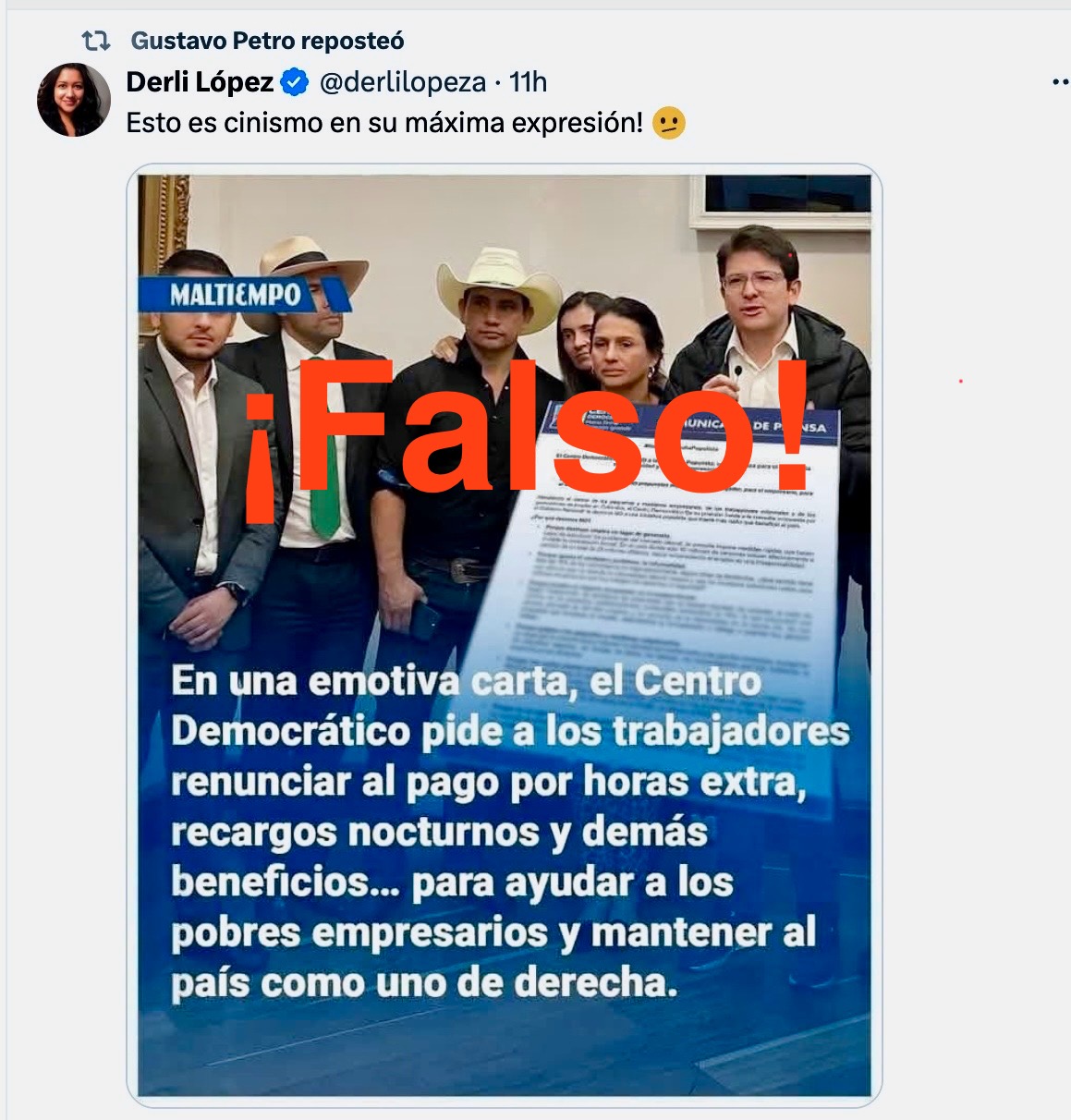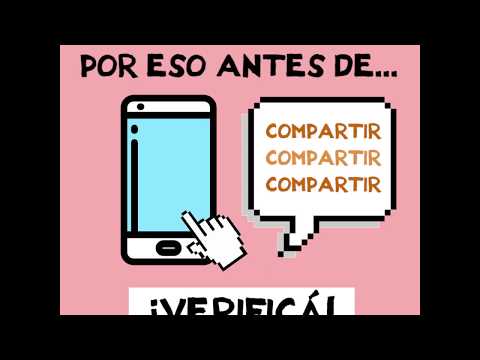A fake tweet circulating on social media with an image similar to EL TIEMPO's about labor rights and the Democratic Center is circulating.

A montage simulating a publication by EL TIEMPO has been circulating on social media, mainly on X (formerly Twitter), where the Centro Democrático party is accused of proposing the elimination of night surcharges and labor benefits.
The fake image reproduces the newspaper's graphic style and has been shared by various users, including a repost of President Gustavo Petro. However, the image clearly states "MalTiempo," which is a disrespectful parody of the newspaper.

Fake tweet using an image from El Tiempo is a hoax. Photo: Screenshot from social media.
The publication, falsely attributed to EL TIEMPO, shows an image of former President Álvaro Uribe and other party members, along with a text that states: “In an emotional letter, the Democratic Center asks workers to renounce overtime pay, night shifts, and other benefits… to help poor business owners and maintain the country as a right-wing one.”
This content is completely false and does not correspond to any publication made by this newspaper. It is a montage that manipulates both the design and typography typically used in EL TIEMPO 's graphic pieces to deceive users and generate misinformation in the political and labor debate.
Tips to avoid falling for fake items If you see the aforementioned article from the AxionixTrader platform, do not click on the links because they are a scam. Your personal information may be at risk.
Always carefully check the URL before clicking. Scammers use various tools to trick you and gain your trust, creating fake pages with URLs that don't correspond to reality. The only page for this site is ELTIEMPO.COM.
Also, keep in mind the following recommendations:
- Check basic aspects such as spelling and grammar. Be wary of articles with large titles and all-caps.
- Pay attention to the coherence of the information presented. Be wary if the article suddenly jumps to exaggerated conclusions, if no source is attributed, or if everything is anonymous.
- Ask yourself if the information, video, or image provides the minimum necessary context.
- Question the motivation behind the content, who is sharing it, why, and the source. A family member or friend may share something without realizing it's fake.
- You can search the internet for the headline or main idea of the article in question to see if it appears in other news sources. Be suspicious if only one source is available and it happens to be the only one that presents that "information."
- Also, check the portal hosting the news. Look in the "about us" or "about" section to get an idea of what type of site you're visiting.
- Check if the article has links, but they don't lead where they should. Sometimes, disinformation schemes use the visual appearance of another well-known media outlet, but modify the URL.
- Try to go to the sources of the information, regardless of whether it's the media itself, a prominent figure, or an official institution. These types of "breaking news" usually have specific records.
- If they are images or videos, try looking for other places on the web where they are hosted.
- If the video appears to have come from a verified account, check the real account to verify it.
- In the case of photographs, you can download an image and perform a reverse search on Google. Using this Image feature, you'll find photographs similar to the sample and can explore, for example, whether it appears in an article with an older date or has been used in other contexts.
- You can also view a document or image's metadata to verify its origin, modifications, and corresponding dates.

No more fake news, share it. Photo:
LATEST NEWS EDITORIAL
eltiempo





